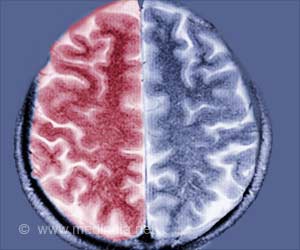The study involved 80 children between the ages of 6 and 10. The results are published in the journal
.
This virtual reality setup allows users to pilot drones using their torsos. VR headset and movements of their torso will allow them to navigate through a series of obstacles in a virtual landscape.
Healthy adults have no problem disconnecting their head movements from their torso for piloting, like looking elsewhere while riding a bike.
This requires complex integration of multiple sensory inputs: vision, from the inner ear for balance, and proprioception, the body’s ability to sense movement, action, and location.
For children, coordination of torso and head movement is in development, so differences with adults are to be expected.
After the acquisition of walking around 1 year until 6-7 years, children will control their upper body as a whole with rigid links between the trunk, head, and arms.
After this age, children gradually learn to control all their joints independently, but resort to the rigid strategy in challenging conditions.
In this study experiment, after wearing a VR headset and a movement sensor on their back, children are asked to play two games. In both experiments, children show control abilities similar to adults when using their head, but have difficulty using their torso to control the games.
Scientists believe that head control is easier in VR environments because the desired orientation is aligned with the visual input. The torso control, on the other hand, requires the user to separate vision from the actual control, which requires complex head-torso coordination.
Young children tend to rely stronger on visual input than the internal sensation of body posture. The novelty of the VR environment appears to overwhelm the child’s brain, which pays less attention to the internal signals.
The study results show that immersive VR can disrupt the children’s default coordination strategy, reweighting the various sensory inputs – vision, proprioception, and vestibular inputs in favor of vision.
The scientists also found that head-trunk coordination is not fully mature yet at 10 years, instead of the previously assumed maturity at the age of 8.
VR has been gaining in popularity, not only for leisure but also for therapeutic applications such as rehabilitation and neurorehabilitation, or the treatment of phobias or fearful situations.
The diversity of scenarios that can be created and the playful aspect that can be brought into otherwise cumbersome activities make this technology particularly appealing for children, and we should be aware that immersive VR can disrupt the child’s default coordination strategy.
Source: Medindia



